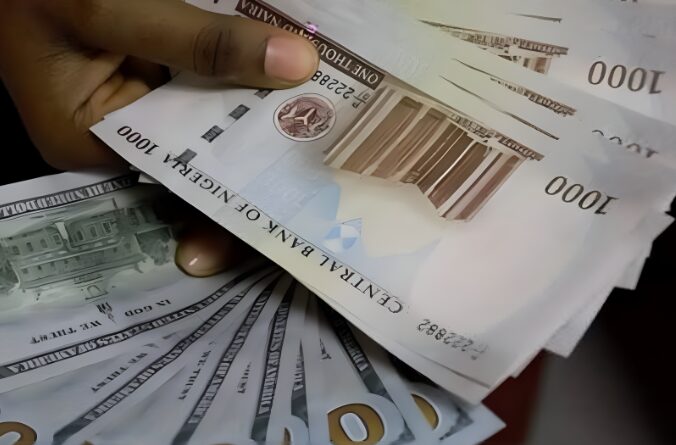The exchange rate between the naira and the US dollar fell to N1,484.75 on Thursday, May 30, 2024, marking the second consecutive decline. This follows a brief appreciation period earlier in the week when the naira strengthened significantly.
Market Movements and Updates
At the start of the week, the naira showed unexpected strength, appreciating to N1,173.88 on Tuesday, its best performance in over two months. This rally began on Monday, with the naira closing at N1,339.33 against the US dollar, raising hopes for a sustained recovery ahead of the May 29th celebrations. However, this upward trend was short-lived, and by Thursday, the naira had slipped back above the N1,400 mark, closing at N1,484.75.
On Thursday, the official exchange rate of N1,484.75/$1 represented a 10.45% depreciation from the previous day. The intra-day high and low were N1,520/$1 and N1,100/$1, respectively, indicating a significant disparity of N420/$1. This widening gap between closing rates and intra-day highs and lows has recently been a notable trend.
The Nigerian Autonomous Foreign Exchange Market (NAFEM) rate closed at N1,263.88 on May 29, 2024. Meanwhile, the daily turnover was $235.41 million on Thursday, a 30% drop from the previous day’s turnover of $336.54 million. Over the week, the market has seen a total turnover of about $1.08 billion, compared to $720.5 million during the same period last week.
In the parallel market, where the exchange rate is traded unofficially, the rate was between N1,460 and N1,470 to the dollar, aligning with the official rate.
Key Insights and Background
Earlier in the week, the naira surged to N1,173.88/$1 on the NAFEM window on Tuesday, marking a 14.09% increase from the previous day’s rate. This was the highest one-day increase since January 2024 and came amidst a significant surge in foreign exchange (FX) turnover, which rose by 81.59% to $328.32 million.
The naira’s double-digit appreciation on the official market was reportedly driven by the Central Bank of Nigeria (CBN) selling more dollars in anticipation of a $1.3 billion non-deliverable forward (NDF) maturing on Wednesday, May 29, 2024. However, with the NDF closed out, the exchange rate has returned to N1,400 and N1,500 to the dollar.
Economic Context and Future Outlook
As of May 28, 2024, Nigeria’s external reserves stood at $32.68 billion, still below the $33 billion level last seen in early April. The country continues seeking foreign investor inflows to bolster its foreign currency liquidity, which is critical for stabilizing the exchange rate. One of the major monetary policies aimed at driving this inflow is the increase in the benchmark interest rate, which now stands at 26.25%.
The recent fluctuations in the naira’s value highlight the ongoing challenges in stabilizing Nigeria’s currency amidst external economic pressures and internal fiscal policies. The return to a more typical exchange rate range suggests a recalibration after the temporary surge, with the CBN likely continuing its interventions to manage the naira’s value and ensure economic stability.


